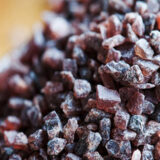Health Tips For Type 2 Diabetes In Children
Children with type 2 diabetes can live healthy lives. If your child has been diagnosed with type 2 diabetes, your doctor will talk to you about the importance of a healthy lifestyle and medications to keep your child’s glucose (blood sugar) levels under control.
About blood glucose
Glucose is found in the blood and is the body’s main energy source. When your child eats food it is broken down by the body resulting in glucose. Glucose is a type of sugar that powers the body’s cells.
Cells need the help of insulin to get glucose out of the blood and into the cells. Insulin is made by an organ called the pancreas.
In children with type 2 diabetes, the pancreas does not make enough insulin and the cells do not use insulin very well.
How to control blood glucose levels
Glucose accumulates in the blood if it cannot be used by the cells. High glucose levels can harm many parts of the body, such as the eyes, kidneys, nerves, and heart.
Your child’s blood glucose levels should be checked regularly to make sure they don’t go too high. I find it difficult to call your doctor he will tell you what your glucose level should be of your child.
You and your child need to learn how to use a glucose meter. Glucose levels can be measured easily and quickly using a glucose meter. First, the lancet is used to prick the skin; A drop of blood is then placed from your child’s finger on a test strip that is inserted into the meter.
Type 2 diabetes medications
An injection of insulin or other oral medication may be prescribed by your child’s doctor if necessary to help control your child’s blood glucose levels.
If your doctor has prescribed a medication, it is important that your child take it as directed. Side effects of certain medications can include bloating or flatulence. Check with your child’s doctor if you have any questions.
In addition to medications, your child’s doctor will recommend changes to your child’s diet and recommend that the child practice physical activity.
Tips for a healthy life
A healthy diet and physical activity are very important for children with type 2 diabetes. Your child’s blood glucose levels are easier to manage when your child is at a healthy weight.
Create a plan for healthy eating
Talk to your child’s doctor and a registered dietitian about a meal plan that meets your child’s needs. The following tips can help you select foods that are healthy and high in nutrients (protein, vitamins, and minerals):
- Make a practice of eating at least 5 servings of fruits and vegetables a day.
- Include high-fiber meal foods, whole grains such as brown rice, whole grains, grains, peas/peas, and bread and cereals. Sweet potatoes or sweet potatoes are also a good option.
- Choose low-fat or fat-free dressings such as grated low-fat Parmesan cheese, sauce, cottage cheese, fat-free/low-fat sauce, low-fat sour cream, low-fat salad dressing, or yogurt.
- Select lean meats such as skinless chicken and turkey (leather), fish, lean cuts of meat (tenderloin, ball, tenderloin, lean ground beef — no more than 15% fat), and cuts of pork lean (loin, chops, ham). Trim or trim all visible fat. Remove the skin from cooked poultry (chickens) before eating.
- Include healthy oils such as canola or olive oil in your diet. Choose margarine and trans-fat-free vegetable oils made from canola, corn, sunflower, soy, or olive oil.
- Use fat-free cooking methods such as baking, roasting, grilling, boiling, and steaming to cook meats, poultry, or fish.
- Serve vegetable soups in broth, or use fat-free (skim) or low-fat (1%) milk or evaporated skim milk to make cream soups.
- Use the nutrition facts on the food package labels to determine which ones have the least saturated fat per serving. Pay attention to the portion size when making your choices. Remember that daily percentage values on food labels are based on serving sizes and calorie levels for adults.
Create a plan for physical activity
Physical activity, along with proper nutrition, promotes good health in life. The following are some ideas to get fit:
- Encourage your child to be active for at least one hour a day. For younger children, Active play can be the best exercise. Parents can join in the fun with their kids and stay active at the same time. The school-age child should participate daily for 1 hour or more in moderate to vigorous physical activity that is age-appropriate, fun, and includes a variety of activities.
- Restrict television and computer use. The AAP does not recommend TV and other digital media for children under the age of 2 and encourages interactive play. For older children, the total time they spend in front of a screen should be limited to less than 1 to 2 hours a day.
- Keep a log or journal of activities. Using an activity log can help children and teens keep an inventory (list) of their exercise program and physical activity. Online tools can be helpful.
- Getting the whole family involved, it can be the best way to spend time together. Also, children who regularly see their parents enjoy sports and physical activity are more likely to do it themselves.
- Provide a safe environment. Make sure that the equipment and the place was chosen for your child to play sports or perform physical activity is safe. Make sure that the clothes your child wears are comfortable and appropriate.
Source:
























